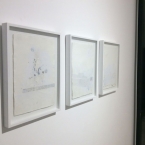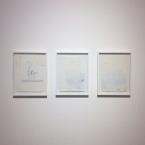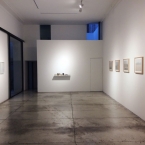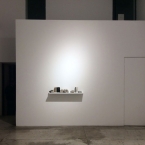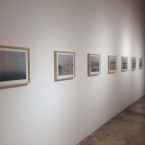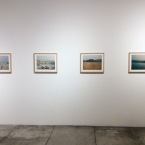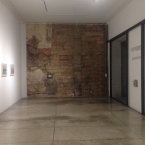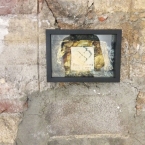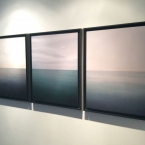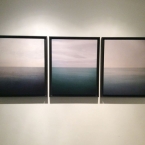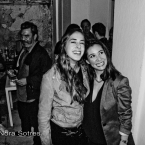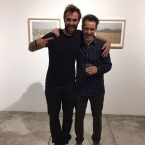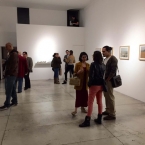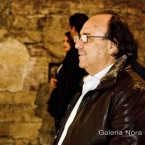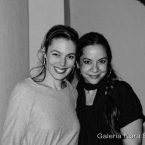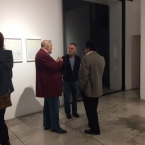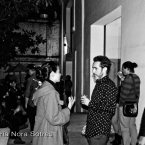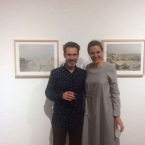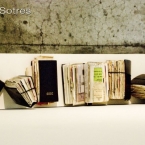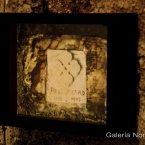Nychthemeron
Greek term Nychthemeron is used to designate the time span of 24 hours, a continuum that neither distinguishes between day and night, nor is divided into hours or minutes. Sometimes to describe the ephemeral, sometimes to refer to the repetitiveness of the phenomenon, Nychthemeron refers to the flow of time, a cycle that is fleeting and permanent at the same time. An example of this are plants such as the passionflower whose flower sprouts and lasts open just one day, but it blooms again the next day with a different flower.
Aleksandar Zaar’s pieces address precisely this temporal flow and its various convergences and disruptions. Through his works, Zaar makes us question about the presence of time in its multiple meanings and how it relates and crosses amongst them.
According to Michel Siffre, time operates on three different levels: the perceived time which we experience subjectively; the biological time, the body per se; and the objective time which is measured by clocks as a cultural convention but especially socially implemented since the industrial revolution.
Zaar takes these temporalities to question and to interweave the extent of their meanings. Beyond the linear, temporal and homogeneous conception, his work shows a permeable and complex temporality that expands without duration. If the duration is precisely the time between the beginning and the end of something, Zaar’s proposal expands those limits and presents a game of contrasting and diffuse temporalities, without precise distinction between past, present and future.
Zaar’s strategies are varied -repetition, accumulation, stratification- but always from the obsession to capture and reflect the temporal dimension. From the timelessness of eternity to the ordinariness of everyday life.
In Portrait of a cemetery, Zaar photographs Île des Embiez, a French island located on the Mediterranean coast. The owner of this island and creator of the famous pastis, Paul Ricard, invited several researchers, artists and biologists to reside there, and at his death he was buried on the island. Zaar looks for the footprints and places surrounding this character and traces history creating a re-presentation of that past. Time is suspended and moved in a timeless place, where the traces of Ricard’s life are merged into the island’s habitat. Both times, the perennial biographical and the nature open one are superimposed and contrasted in images that transport us to cliffs and other enigmatic spaces where to expand our experience and our own time.
On the other hand, Zaar’s own biographical time is gathered in his piece Agendas. These notebooks, a product of time’s social convention, are governed by a systematic order of days, weeks and months with the objective of scoring events to be remembered on certain dates. For eight years, the artist documents and records his life experiences. Thus, time is reified, encapsulated in the agenda pages of several years which arbitrarily increase the volume of the object and disclose the experience. Time spent is exposed in a “nowness” that generates a new temporary relationship with the viewer.
The contraposition between subjective and objective time is also addressed in his paintings. Zaar reproduces several instant text messages (SMS) received in his cell phone, reflecting his keenness to encapsulate certain times and to make enduring the ephemeral.
Zaar paintings oppose the productivist and accelerated perspective of the messages’ time, to the waiting and delay that entails a date and a personal encounter. By transferring them to the pictorial format, Zaar adds up a more extensive temporality as opposed to the immediacy of photography.
Finally, in Horizon, the artist displays the unattainable sea lines at the same place but in different moments of the day. The definition of landscape is voluntarily lost and faded away in a timeless pictorial treatment, where time is not enclosed but open to a continuation of experience.
Repeating this action enables Zaar to present the landscapes as fragments whose boundaries are joined together and spread. The horizons are thus presented as mirrors, breaking the temporality and setting new moments of experience. As the physicist Richard Feynman said, “Time is what happens when nothing else does.”
Virginia Roy, 2016
Opening on November 3, 2016, 7 to 10pm
Exhibition runs from November 4, 2016 until January 15, 2017
Nora Sotres Galeria. Mérida 16, Col. Roma, CP 06700, Cuidad de México
Curated by Virginia Roy

